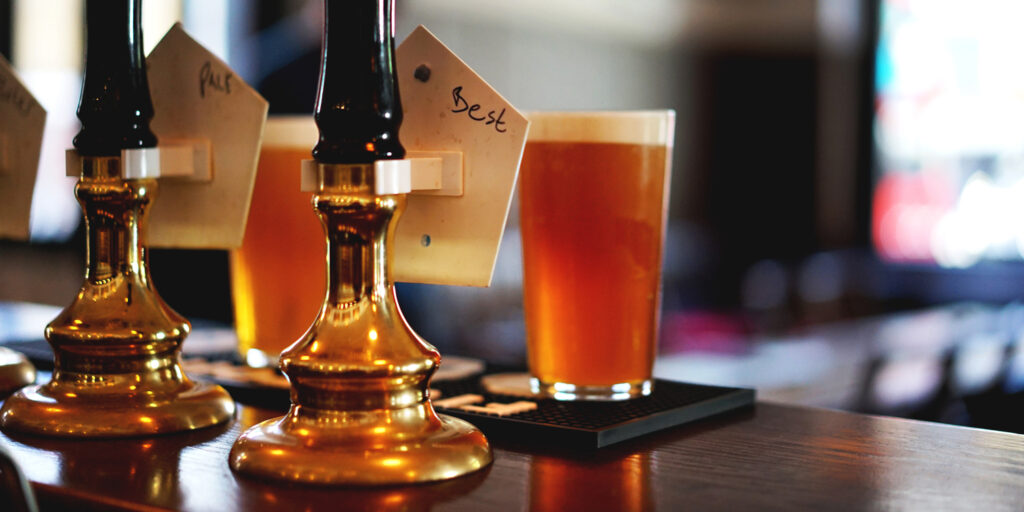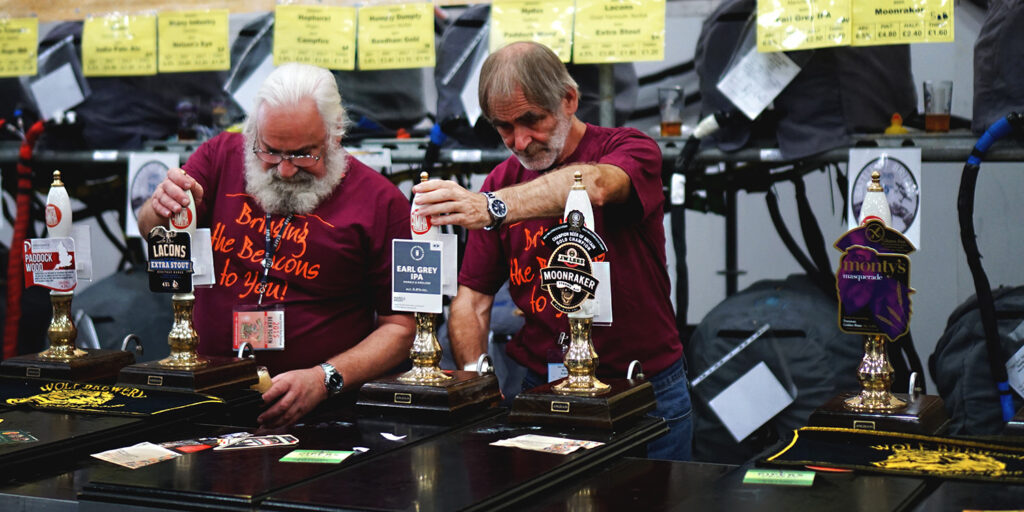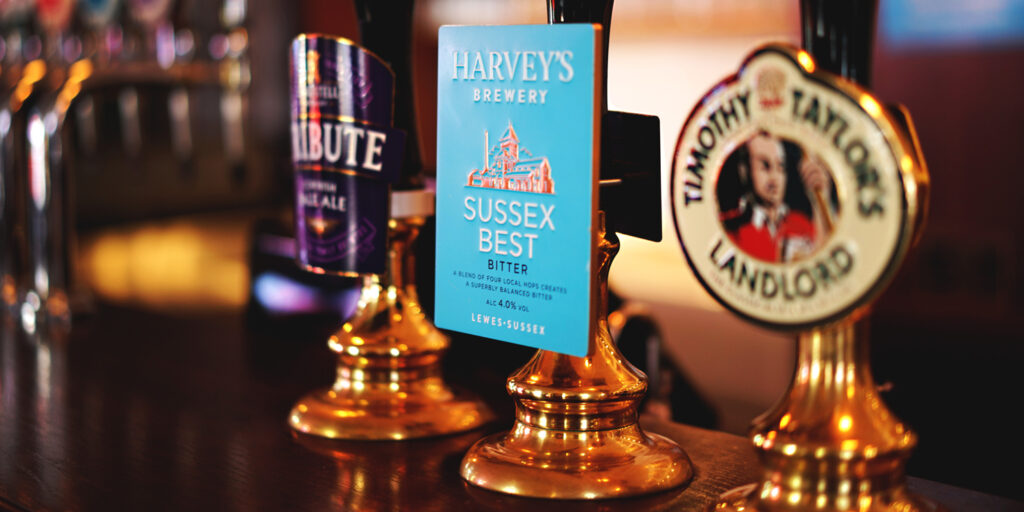The Importance of Cask Beer – Part Three is the final part in a series of blog posts about cask beer from our resident beer writer Matthew Curtis. In this edition, he examines how cask is perceived on an international level, and what the category could potentially learn from how well it’s respected overseas. Read part one, The Obsession, here, and part two, which examines some key data and checks in on the health of the category, right here.

Back in 2017, during a London-based beer festival at which I was hosting a series of panel discussions, I was approached by none other than Matt Brynildson, brewmaster at California’s Firestone Walker. As a brewer, he’s responsible for developing some outstanding beers, from the delicious Mind Haze IPA, to the sublime Pivo Pils. Put simply: he not only knows his beer, but is one of the brewers responsible for defining modern beer culture throughout the United States, (and the rest of the beer drinking world as a result.)
I was not prepared for what he would ask me, however. Nor was I ready for his response to my answer to his seemingly innocuous question, or how it would begin to reshape how I felt about cask beer, forever.
His group – which also featured New Belgium Brewing’s master blender Lauren Limbach, and Alexandra Nowell, then brewing director at Three Weavers brewery in California, and now the technical advisor at hop breeder CLS Farms – was after some advice. Where were the best places in London for a handful of influential American brewers to grab a few beers after the event?
I relished this opportunity, and began reeling off a list of taprooms and craft beer bars with abandon. They simply had to visit Mother Kelly’s in Bethnal Green, I thought, and then make their way down the Bermondsey Beer Mile, taking in the bright lights of the UK craft beer scene as they did so.
“Actually we were thinking we’d start at Ye Olde Cheshire Cheese,” Matt said in response.
Imagine my reaction, standing there talking to the brewmaster at Firestone Walker, who has just told me he wants to visit a Sam Smith’s pub. Despite many drinkers having a great fondness for the storied (and, at times, controversial) Yorkshire brewery, it was a long way from what I felt represented the epitome of British beer and pub culture at the time. Initially I was aghast, but then, a realisation slowly dawned on me; I had been thinking about British beer – and cask beer in particular – in completely the wrong way.
I’m lucky that I have got to spend a lot of time in the US over the past decade-or-so. In this time I have had the opportunity to indulge myself at some of the most exciting breweries in the world, from Russian River in Sonoma, California, to Half Acre in Chicago, and many more in between. The obsession I developed while experiencing beer in North American temporarily put the blinkers on me – I loved it so much I believed this is what beer should be like all over the world. And if you look at the tap list in any modern beer bar in almost any major city across the globe, from Sao Paulo to Osaka, to pretty much everywhere in the UK, that is exactly what has happened.

Love it or hate it, the craft beer revolution is/was a real thing that changed beer forever. Unfortunately for the UK, it came at a time when traditional British beer was stuck in something of a rut, and it failed to galvanise the opportunity that American craft beer presented, while newer, and much smaller breweries came along and did exactly that.
So why weren’t these experienced American brewers interested in experiencing the modern British bars and breweries I was eager for them to visit? Because they wanted to experience what they believed to be the heart-and-soul of British Beer: London Pride, Tim Taylor’s Landlord, Harvey’s Sussex Best, and yes, probably a bit of Sam Smith’s Old Brewery Bitter. They wanted to drink cask and lots of it.
Think about this for a moment: If you visit the West Coast of the USA, you will probably want to indulge yourself by drinking lots of IPA. Just as if you visited Munich or Prague, you would want to drink lots of pale lager, served in the traditional style, in a tall glass, and topped with alpine peaks of foam. When in Brussels, you simply have to drink some classic Belgian beers like Orval, or Westmalle Tripel, and always in the matching glassware.
If you apply this same logic to beer enthusiasts drinking the UK, then of course it’s cask ale that they want to drink. Beers like London Pride and Landlord were, in part, responsible for igniting the American craft beer revolution in the first place. Storied family breweries with over a century or more of history, making beer the old fashioned way, and serving it through a beer engine via hand pull is the stuff of legend. To American visitors, their own beer culture simply wouldn’t look the same without it.
Cask beer is revered by beer lovers outside of the UK. I have lost count of the number of Americans who tell me they adore it, and have tried replicating it, but without quite reaching the level of success they hoped for. Visit a decent sized liquor store in the US and you will be shocked at how many shelves are lined with bottles of Samuel Smith’s Oatmeal Stout or Morland Old Speckled Hen – not even the best representation of traditional British beer, but enough to tickle the fancy of those who lust after it. There are even a number of breweries in the US now specialising in cask ale, with some, like Denver’s Hogshead Brewing, doing a pretty good job of it. Just as with other imported dispense methods like, say, Lukr side-pour taps, having a beer engine and a hand pull is a must have for any brewery that’s genuinely serious about traditional British beer.
It’s not just Americans who feel like this about cask beer, either. Yvan de Baets, the brewer/owner of the excellent Brasserie de La Senne in Brussels once told me, quite sincerely, that his favourite beer in the world is Harvey’s Best, and that it’s pronounced flavour, combined with its inherent drinkability, is a huge influence on his own recipes.
The question is, then, if cask beer is so fondly thought of by beer lovers around the world, why is this not a key facet in its own promotion and preservation? Why have so many British drinkers become so blasé about what is potentially our greatest gift to the beer drinking world?

Perhaps it’s best if we look at a more local example, and switch roles; take the ubiquitous Guinness. Some of you reading will no doubt shudder at the thought, but the way Guinness has been marketed across the world – in particular by its method of dispense – is unparalleled. Without delving too much into the semantics of this, I want to you to consider what things might look like if this was the other way around; what if there were English theme pubs all over the world (I know there are, but by this I mean actual good ones) and at there centre, the crown jewel: a row of hand pulls pouring perfectly conditioned Bitter, Mild, and Golden Ale.
In reality, outside of a few chain pubs (take for example The Crown in Belfast, which is owned by Birmingham based pubco Mitchells & Butlers) there is not a lot of cask beer on offer in Ireland. The situation is much the same if you get into the Scottish Highlands, or over the channel into France and Belgium. Despite the proximity, there’s little to no cask beer available once you’re outside of its heartland.
There are inherent challenges to keeping cask that are behind this, most notably the fact that, once tapped, cask beer becomes exposed to oxygen, which will gradually cause it to spoil – not a problem shared by kegs, which protect the beer inside with a cap of carbon dioxide. However, those that love cask beer know that the extra effort required in the cellar is more than worth it, and when it’s presented well, at a fair price, shifting it in two or three days isn’t much of a hardship.
I consider that, perhaps, if cask is to have a brighter future, then part of that future will happen overseas. There’s already plenty of evidence of this happening across the United States, with bars such as New York City’s The Grand Delancy offering a hand pull among its 40+ beer lines.
Ireland feels like an obvious place for cask to happen. It’s a nation that loves beer, and that millions of people visit each year, with part of that visit inevitably centered around drinking beer. It’s also worth considering that, in Ireland, winning a new keg line from one of the big multinational brewers is a challenge, and smaller breweries in the UK have gotten around this by producing cask. Could a few hand pulls here and there be the gateway to more independent beer on the bar in Ireland?
I note that, recently, Bullhouse Brewery has installed a cask beer line at its taproom in East Belfast, which wasn’t there when I visited not long after it opened in June 2022. This could be mere happenstance that it coincides with my own musings, but I consider that in order to cask beer to thrive, it needs to do so outside of the UK, not just within it.
I don’t really believe in coincidences, however. Cask beer is a cool thing, plenty of people both in and outside of the UK are well aware of this. Personally, I see a modern brewery, based in Northern Ireland, taking on the role of stewarding cask beer in a burgeoning beer city like Belfast as a huge positive. And if people keep drinking it, then surely more bars and breweries will want to join the party.
While it will always be important to recognise that cask is inherently part of British beer culture, perhaps its best chance to thrive both today, and in the future, is to unshackle its moorings on this little island, and let it bloom all over the world.
—Matthew Curtis